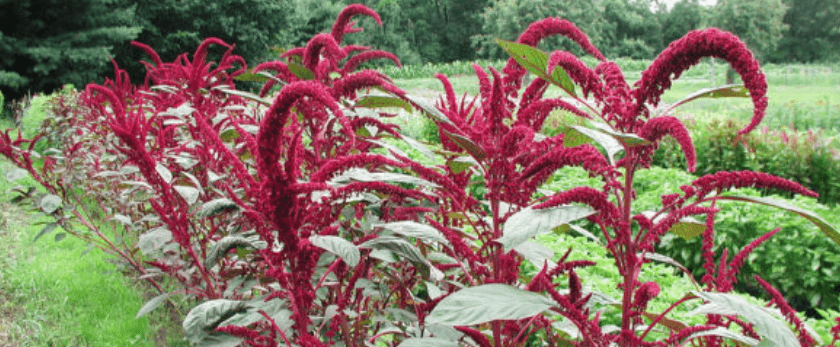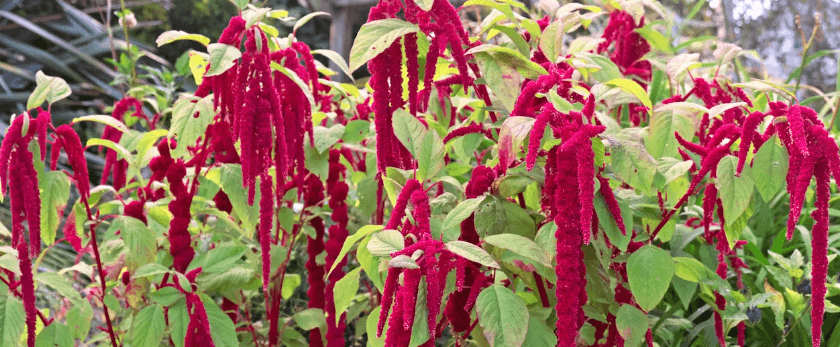Amaranth is a versatile and nutritious plant that has been cultivated for thousands of years. It is not only a great addition to any garden, but it also has numerous health benefits and can be used in a variety of dishes. In this article, we will discuss how to grow amaranth and provide tips for caring for this plant.
What is Amaranth?
Amaranth is a leafy plant that belongs to the Amaranthaceae family. It is native to Central and South America, but it is now grown in many parts of the world. The plant can reach a height of 6 feet and has broad, green leaves and vibrant flowers that can range from red to purple. Amaranth is a hardy plant that can thrive in a variety of climates and soil conditions.
How to Care for Amaranth
Watering
Amaranth plants require regular watering, especially during hot and dry weather. The soil should be kept moist but not waterlogged. It is important to water the plant at the base and avoid getting the leaves wet, as this can lead to fungal diseases. A good rule of thumb is to water the plant deeply once a week, rather than giving it small amounts of water every day.
Light
Amaranth plants prefer full sun, but they can also tolerate partial shade. If you are growing amaranth indoors, make sure to place it near a window that receives plenty of sunlight. If you are growing it outdoors, choose a spot that gets at least 6 hours of sunlight per day.
Soil
Amaranth plants can grow in a variety of soil types, but they prefer well-drained, fertile soil. The soil should be rich in organic matter and have a pH level between 6.0 and 7.5. If your soil is too acidic, you can add lime to raise the pH level. If it is too alkaline, you can add sulfur to lower the pH level.
Fertilizer
Amaranth plants are heavy feeders and require regular fertilization to thrive. You can use a balanced fertilizer, such as a 10-10-10, once a month during the growing season. Alternatively, you can use organic fertilizers, such as compost or manure, to provide the plant with essential nutrients.

Pruning
Pruning is not necessary for amaranth plants, but it can help promote bushier growth and prevent the plant from becoming too tall and leggy. You can pinch off the top of the plant when it reaches a height of 12 inches to encourage lateral growth. You can also remove any dead or damaged leaves to keep the plant healthy.
What is the Best Time to Grow Amaranth?
Amaranth can be grown year-round in tropical and subtropical regions. In temperate regions, it is best to plant amaranth in the spring after the last frost. The plant can tolerate some cold weather, but it will not survive a hard frost. If you live in a colder climate, you can start the seeds indoors and transplant them outside once the weather warms up.
Common Problems with Amaranth
Amaranth is a relatively easy plant to grow, but it can face some common problems. Here are some of the most common issues and how to address them:
- Pests: Amaranth plants can be susceptible to pests such as aphids, flea beetles, and cutworms. You can use organic pest control methods, such as neem oil or insecticidal soap, to get rid of these pests.
- Diseases: Amaranth plants can also be affected by fungal diseases, such as powdery mildew and downy mildew. To prevent these diseases, make sure to water the plant at the base and avoid getting the leaves wet. You can also use a fungicide if necessary.
- Weeds: Weeds can compete with amaranth for nutrients and water. To prevent weeds, you can use mulch around the base of the plant. If weeds do appear, make sure to remove them carefully to avoid damaging the plant.
Conclusion
Growing amaranth is a rewarding experience that can provide you with a nutritious and versatile plant for your garden. By following these tips for caring for amaranth, you can ensure that your plant thrives and produces an abundant harvest. Remember to water regularly, provide enough sunlight, use fertile soil, fertilize regularly, and prune when necessary. With proper care, your amaranth plant will flourish and provide you with delicious and healthy greens.










